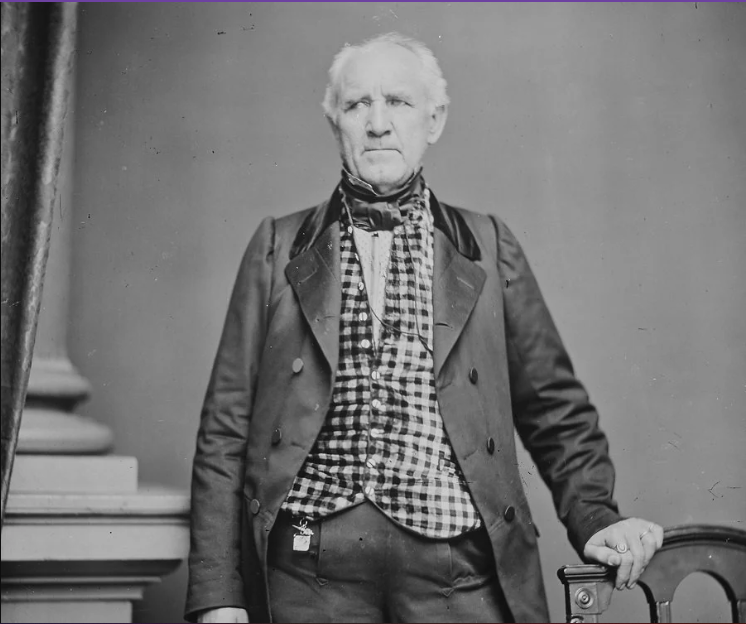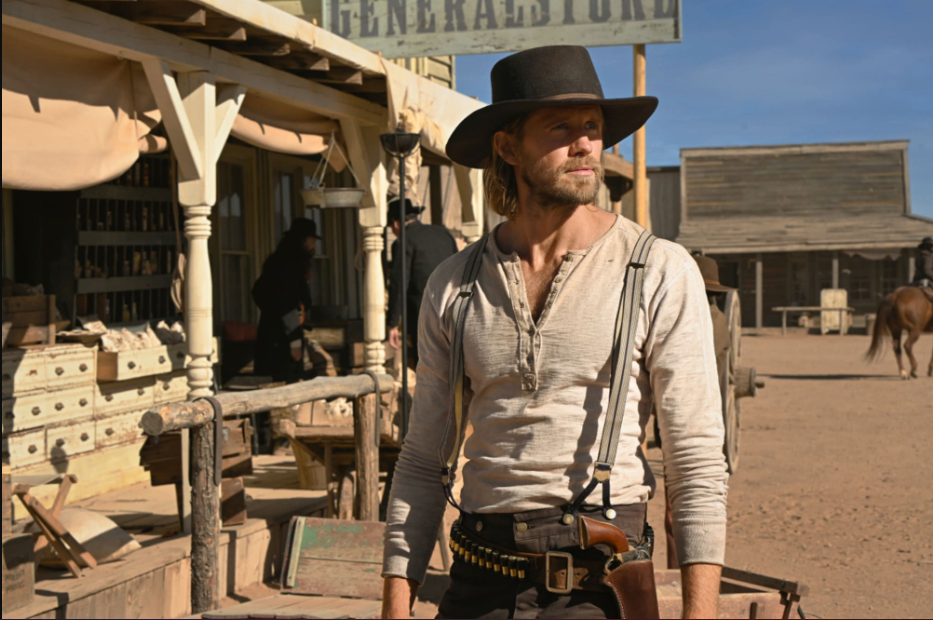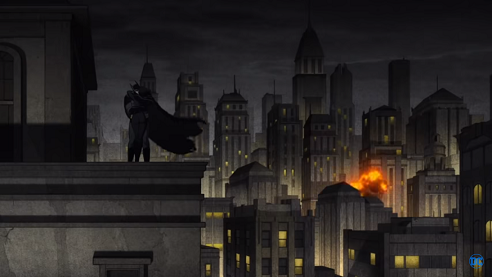Historical Context for Walker: Independence – The Civil War and Reconstruction Era

Walker: Independence is set during the 1870s. This puts the events of the show right around the midway point of the Reconstruction Era following the U.S. Civil War. Hearing this inspired me to brush up on my Texas history for this era as I knew little about it, even with my mandatory Texas History class in school. I learned a few new things on my research journey, and I wanted to share those things here to help us all better understand the historical context of Walker: Independence!
The show taking place during the Reconstruction Era is significant for a few reasons, the main one being that the Civil War is a major event in US history and it’s highly unlikely that the writers will just ignore the potential impact it would have on character dynamics and plot points. During this time, tensions between the North and the South were extremely high. This resulted in rampant political violence throughout the South, even after the final shots of the war were fired. Texas, in true Lone Star State fashion, had a unique set of issues due to being a frontier state at this time. Between political battles, racial violence, and economic struggles, nearly every character on the Walker: Independence call sheet would be affected by this era in Texas history. I’d like to take the time to talk about the Civil War, what the Reconstruction Era was, how it all affected Texas, and how all this could be integrated into the show.
Please note that this will not be an in-depth, detailed historical discussion about the morality of one side or the other. I’m going to try to simply discuss the facts, however messy they may be, and relate it to the Walkerverse as best I can. I would advise that you do your own research on this topic to cover anything that I may have missed or that you disagree with.
The “War of Northern Aggression”
Before we can have any real talk about the Reconstruction Era, I feel we need to discuss the Civil War. Many people in the South referred to it as “The War of Northern Aggression” both during the war and for many decades afterward. Looking at the history of the war from a Southern perspective, it’s not hard to see how it got that name.
In 1860, Abraham Lincoln was elected president and he made clear early on that he wanted to do away with slavery in the United States. This posed a threat to the economy of most places in the south as slave labor was the foundation of their most profitable industry: agriculture.
On December 20, 1860, South Carolina was the first state to secede over this issue. One by one, each state in the South would follow, and on February 4th, 1861, the Confederate States of America would be formed with the intention of maintaining slavery and, arguably, states’ rights. It is worth noting that in many states, this decision had been made behind closed doors by the rich and influential before official votes were held.
The Confederate States of America was formed with the intention of maintaining white supremacy and slavery in the South. While not all individual southerners agreed with the idea (particularly in Texas), large plantation owners held much economic and political power during this time, and they weren’t keen on losing their positions.
This was not the start of the war. The first battle of the Civil War was the Battle of Fort Sumter, which took place in April of 1861. Fort Sumter was a federal military fort in Charleston, South Carolina. One can imagine how there would be conflict around a foreign nation having a fort on your soil. When South Carolina asked Washington D.C. to surrender Fort Sumter to them, they received a firm “No”. This created a problem for federal Major Anderson and his garrison, who were still stationed in the area. They were essentially in enemy territory and running out of supplies. When Abraham Lincoln announced his intention to send reinforcements and supplies to his troops at Fort Sumter, the citizens of Charleston took that as a declaration of war and mobilized troops to secure what they believed to be their fort.
It is important to note here that the territorial dispute is not the only reason why Charleston wanted Union troops out. After Lincoln’s election and statements about ending slavery in the United States, many slaves ran away from their owners and tried to turn themselves over to Union troops in the hopes of gaining freedom. However, many were simply turned over to the state marshals, or even directly back to their owners. Despite this, the citizens of Charleston worried about the rise of runaway slaves or the potential of a slave uprising (which never came to be).
On April 9th, a delegation was sent to the fort to ask for Major Anderson’s surrender. Again, the answer was “No”, along with the helpful information that his men only had enough supplies to last until April 15th.
On April 12th, Confederates opened fire on Fort Sumter and Major Anderson responded to the best of his ability. Hopelessly outgunned and outmanned, there was very little hope he would retain ownership of the fort. For 36 hours, Union and Confederate soldiers fired at each other over the walls of the fort until, after running out of resources, Major Anderson surrendered the fort to the Confederate forces.
While this battle ended quickly, it was only the beginning of a four-year war for the preservation of 1)state’s rights under the federal government and 2)the institution of slavery. This battle, along with the Union’s refusal to acknowledge the Confederacy as a sovereign nation, led the people in the South to view the North as the aggressor.

Outside the United States
Something that surprised me in my research was the international interest in the American Civil War.
Unlike the Union, Great Britain recognized the Confederate States of America as a sovereign nation. While Britain was never officially involved in the conflict, nor were any treaties signed, they did have an investment in the war as weapons suppliers and major bond holders to fund both the North and the South.
Both the North and the South expected the British to support them in the war as they both had trade with Great Britain. However, the British chose to remain politically neutral, which some historians speculate may have drawn out the war as the North couldn’t rely on the British navy to run interference on Southern ports and disrupt their supply chain.
Despite the lack of official involvement in the war, approximately 50,000 British men crossed the waters to involve themselves as soldiers and volunteers. Since they came over individually, they were not assigned to one side or the other and simply joined whichever side best matched their needs or ideology. As a result, a good number of these volunteers joined the fight down South. Some of these men joined the war for financial reasons as well.
The South During the Civil War
The Civil War shook the nation. It was a war that ripped the United States in half, turned families against each other, and killed over 600,000 of its own citizens. While I could write a separate article just talking about the horrors of the war and how it affected our country, I’m going to focus on just the effects it had on the South and Texas for now.
The initial reaction to the Civil War in the South was more positive than one would expect. After all, what dashing young man hadn’t heard of the glories and honor of war from their forefathers? Across the south, men were ready to put their lives on the line for what they believed were their rights and to keep those darn Yankees out of their business.
Texans were more of a mixed bag. The decision to secede from the United States was far from the unanimous decision it had been in Alabama or Virginia. Many people in Texas, particularly those in the northern region, had moved there to get away from the social, economic and political chokehold that plantation owners had in other areas of the south. Slavery, while present in Texas, did not support the economy like it did in most other Southern States. To some Texans, joining the Confederacy would put them right back in a situation that they’d sacrificed a lot to get away from. Sam Houston, a major historical political figure, was also strongly against this; he’d fought hard to get Texas into the Union and he wasn’t happy with them leaving less than thirty years later.

[A photograph of Sam Houston courtesy of thefamouspeople.com]
I also think that it’s important to note that the Texas Revolution, the war that freed Texans from the Mexican government, took place just three decades earlier. Many people, including men who would be called upon to fight in the Civil War, remembered the tragedies and horrors of that war all too well.
During the Civil War, soldiers and civilians alike were greatly affected, as well as the land that these people relied on for their survival.
War is a deadly act and the South felt that in a big way. Hundreds of thousands of lives were lost on both sides. In some places, nearly a quarter of a generation of men were lost. Of those who survived, many were left with physical handicaps. Those who were left physically intact were still severely traumatized by what they’d witnessed on the battlefield. The loss of so many men had a negative effect on the birth rate as well as attempts to restart the economy since so many potential workers had been lost to battle.
Large plantations and smaller portions of fertile farmland were razed and destroyed by both individual battles and planned raids made by Union soldiers. Sherman’s March to the Sea, a military campaign led by Major William Sherman throughout Georgia, is a famous example of this. During this campaign, his soldiers followed a “scorched earth” policy where they destroyed farmland, personal property, military targets, industry, and infrastructure in order to disrupt supply lines to the Confederate armies.
The effects of the destroyed land were devastating to the Southern economy, which relied on agriculture, particularly the cotton plantations. Things were already going to be difficult to maintain without slaves to keep labor costs down. The destruction of crops, farmland, and shipping infrastructure crippled the South economically and they wouldn’t recover for over a century. Some historians argue that they never truly recovered.
Reconstruction Era
Walker: Independence is set in the early 1870s. This puts the show’s story at a minimum 5 years after the end of the Civil War and smack in the middle of the Reconstruction Era. Let’s talk about that.
Following the Civil War, the Confederacy was dissolved and the federal government of the United States of America took it upon itself to “rebuild” the South and reintegrate them into the Union. Despite the name of this era and the stated intention of this government, there was very little construction or rebuilding going on in the South. Rather, time and resources were allocated toward tearing down the remaining aspects of the Antebellum Era and instating new, progressive, “radical” cultural ideas such as equality between whites and blacks. Intentions may have been good, but it can’t be ignored that some policies brought a lot of harm to the people of the South.
The federal government seized control of the South to ensure everyone was going to follow the new established order. Part of that was turning the South into a military zone and imposing martial law. On top of that, the Reconstruction Act of 1871 stated that the individual state governments would be made provisional and defer to Washington D.C. until they complied with demands to write new state constitutions, which would have to include the 13th and 14th amendments of the US Constitution (which ensured the freedom of the former slaves and their rights). Until those demands were met, the South remained a military district and was subject to federal occupation. Once state constitutions were rewritten to not contradict or conflict with the overall US Constitution, state legislatures would be able to govern on their own again and regain their federal representation in Congress.
Further Reconstruction Acts included the disenfranchisement of former Confederate leaders, meaning that they could not vote on the new constitutions or in any elections, nor could they run for office. This gave lots of room for the opposing political party, the “Radical Republicans”, to seize political control at the state and local levels.
Outside of politics, there were social and economic opponents for the citizens of the South. These obstacles came in the form of individuals of “carpetbaggers” and “scalawags”.
“Carpetbagger” is a derogatory term for a Northerner who moved to the South in the hope of economic or political gain. Due to the devastation of the South’s agriculture-based economy, there was a lot of room for new industry and there were plenty of people from the North who wanted to take advantage of the opportunity. These opportunists also helped the Republicans gain a political stronghold in the South by growing their support voter base.
Northerners moving to the South were able to purchase land at a low price due to the economic struggles in the region. Many chose to lease out portions of their land for farming and some even partnered with troubled plantation owners in the hopes of getting involved in the cotton industry. Initially, they were welcomed as Southerners saw the need for the economic stimulus, but some saw them as “low class opportunists” taking advantage of the South’s poor condition. Though it’s likely true that some of these carpetbaggers were just sleazy opportunists, a good number of them came down to help “reform” the South and aid the newly freed slaves.
“Scalawags” were a slightly different story. These individuals were Southern natives who sided with the Republican party and the freed slaves. Some came to this party in the hopes of gaining favor with the North and avoiding punishment as Confederates. Others had been on the side of the Union even during the Civil War. Many of these people were small farmers and middle-class people who never owned slaves. Some of them had even served in the Union army. While not all of them were allies for African Americans, they wanted to join the fight in keeping “the rebels” down.
The South’s “Revenge”

The Reconstruction Era was a war in and of itself in some ways. It was an era full of political violence, social unrest, and economic strife. There were people in the South who felt oppressed and betrayed and weren’t going to take the government’s harsh treatment lying down. For many, their lives had been destroyed by war and systematically made worse by what they viewed as the punitive policies put in place by Washington D.C. Many people in the South wanted to move on and try to rebuild their lives. However, there was a select group who wanted revenge on those they believed had wronged them.
Much of this violence came at the hands of outlaws. Outlaw gangs ran rampant in the South. In a way, the former confederacy was a “safe haven” for them as they were able to murder and loot as they pleased, so long as they attacked the right people. They received the blessing of some members of the public and public officials to do as they pleased. Many a legendary tale was born of outlaws like Jesse James.
Attacking former slaves to “remind them of their place” was common and they did make easy targets for those who were looking for a fight. It wasn’t as easy to attack Republican politicians who had the backing to return the attack and the power to change things that certain Democrats didn’t want changed. This led to the formation of “terrorist” organizations like the KKK. These men joined forces and planned organized attacks on voting locations, politicians, and other individuals who crossed their path. These organizations focused most of their efforts on both the political and social areas and made it clear to those around them that if they weren’t supporting their efforts, they were the enemy.
There were federal troops in major cities to help combat the violence posed by these groups. It was a different story for smaller cities and towns, though they still dealt with their fair share of violence. White Unionists and African Americans alike dealt with regular threats of violence and murder as the KKK and outlaw gangs terrorized them. Without the support of the federal troops offered in the cities, there was very little they could do to defend themselves from these organized attacks. Even in the cities, federal troops could be overwhelmed and were often on the receiving end of attacks themselves. Many people reached out to Washington for additional aid, but their cries went unanswered.
The actions of the KKK, while not the sole cause, did have a part to play in lessening support for the Republican party in Texas as they threatened and discouraged both potential politicians and voters. However, even after the Democrats regained control of the Texas State legislature in 1873, the violence did not cease everywhere. Republicans were now shying away from running for state offices, but some were still willing to try their hand at the county and city levels. This did not sit well with the KKK and their allies in the political ring, and violence continued in these smaller areas, where there would be little to no resistance.
I do want to clarify that this violence was not approved by all Southerners. Many people in the South were looking to rebuild and even welcomed the Northerners to their cities. The people who went on the attack were an angry opportunist group that was dwarfed by the larger population.
Unique Issues of Texas
While Texas dealt with many of the same issues as other states in the South, they had their own unique issues as well. Not only is there recorded evidence that certain areas of Texas were still engaged in battle even after the end of the Civil war, but they also faced issues with the Tejanos and the Native American tribes.
The Battle of Palmito (Palmetto) Ranch, the last official battle of the Civil War, happened 34 days after a truce was called by Confederate General Robert E. Lee and Union General Ulysses S. Grant. While this did not end the war, it was generally accepted as an order to stop the fighting so that negotiations for a peace treaty could take place. Despite this, on May 12, 1865, a troop of Union soldiers attacked Confederate outposts despite having received words of a truce and the vanquish of Confederate armies. The goal was to scatter troops and possibly to gain a name for Union leader Colonel Theodore Barret. After meeting little resistance for most of their run, they were driven back by Confederate forces under the command of Colonel John S. “Rip” Ford and had to retreat after being dealt 100 casualties.
The Tejano population was made up of Mexicans who had either lived in Texas before and during the Texas Revolution or had immigrated there afterward. They had a rocky relationship with their white neighbors at the best of times. Racial tensions leftover from the Texas Revolution were left simmering for years. The Civil War stoked those flames, and the Tejanos became a target of violence during the Reconstruction Era. There is little evidence to suggest that the Tejanos actually did anything of their own accord to cause this reaction; it appears that they were just caught in the crossfire of a larger incident. In 1983, mimicking the derogatory racial language from the turn of the century, historian Arnoldo De León wrote: “Anglos throughout the state faced the most severe resistance from colored people- by riotous and uppity blacks in the old plantation region, by intransigent [Native Americans] making their last stand in the western frontier, and by unneighborly Mexicans. It was in this era that the colored thread of multiracial society posed the greater challenge to the white racial order….”* as part of a psycho-historical analysis on Mexican/Texan relations during this time.
Being a frontier state also came with its own set of issues. The biggest of these problems came in the form of conflicts with the Native American populations. It goes without saying that these two groups didn’t have the best relationship. Things only got more tense following the Civil War due to the lack of defense on frontier outposts. Ordinarily, those areas would have federal or state troops as defense but the War took them away to the battlefield. Following the end of the war, federal troops were relegated to the interior of Texas, where they were needed to defend the newly freed slaves from those who wanted to hurt them. State troops were prevented from going out there because of federal interference.
Possibly because of the lack of defense in these areas, there was an escalation in Native American raids on these outposts. The people living there turned to their state officials for aid, who then turned to Washington for permission (remember, the state government was provisional at this point and there was little they could do on their own). Their calls for help were not answered as some federal officials believed that Texas “exaggerating the violence on the frontier to lure federal authorities into removing their troops from the interior of the state where they were providing protection to the freed people.” This did little to ease the tensions between the North and the South and further aggravated the citizens of Texas.
Reconstruction Era of Walker: Independence
Now that we’ve discussed the real-world history of this era in time, I want to talk about how this could impact the show, its characters, and their dynamics.

[Promo photo of Abby Walker courtesy of Cowboys and Indians]
Let’s start with the star of the show, Abigail Walker. She and her husband, Liam, are traveling from Boston to Independence so that Liam can fill in the sheriff position. The fact that they’re from Boston is already going to cause them problems. Northerners are hardly welcome down South, especially when they’re trying to enter positions of authority. It’s possible that this could’ve been the motivation behind Liam’s murder. This could also be a factor in why Hoyt is initially so cold to Abby.

[Screenshot of Augustus courtesy of the CW]
There is also the matter of Augustus. Even though he is the deputy, he’s also African American, a very popular target for violence. However, that doesn’t necessarily mean he will become a victim. He is somewhat protected by his badge, though that won’t cover everything. It’s highly possible that, given they hadn’t seen many African American citizens in Independence (thus far), there wasn’t enough of a risk of “Black Rule” for the white supremacists to concern themselves with him.

[Promo photo of Calian courtesy of Entertainment Weekly]
Calian is also in a unique position to be a victim of aggression. Being Native American, he’s not exactly welcome in the town of Independence. He would be at odds with both social rejection and government authority if he veered too far into town. It makes me wonder just how helpful he would be to Abby in the fight against Tom Davidson.

[Promo photo of Lucia Reyes courtesy of the CW]
Lucia Reyes comes from a similar position as Calian and Augustus. She’s an outsider in town and, as a Mexican, she’s a potential victim of Reconstruction Era violence. I think it’s likely that the trouble her family is facing comes from racial and economic tensions following the Civil War.

[Promo photo of Hoyt Rawlins courtesy of the CW]
Hoyt Rawlins is a potentially interesting character. He’s described to us as an outlaw, and the Reconstruction Era is known for idolizing that particular breed of men. (Fun bonus: it’s possible that the modern day Hoyt Rawlins got his name from a famous Texan Folk Hero).

[Promo photo of Kate Carver courtesy of Entertainment Weekly]
In Kate Carver’s initial announcement, she was described as a federal agent investigating things in Independence. While this descriptor hasn’t come up in recent press around the show, we are told that she’s very interested in Abby’s origins so I’d say it’s likely that she’s still involved in law enforcement somehow. She could be an agent of the North making sure the people of Independence are complying with the new order.

I do want to take a moment to talk about Hagan as well. As mentioned earlier, the British were heavily involved in the Civil War, including many volunteer soldiers fighting on the side of the South. We’ve also witnessed that he and Tom Davidson have a relationship, at least from a business perspective. I think it’s possible that Tom and Hagan are war buddies who remained close after the smoke cleared.
Conclusion
The history of the Civil War is a messy and complicated one. From the first bullet fired at the Battle of Fort Sumter to the final days of the Reconstruction Era, there were very few moments where anything could ever be considered black and white. It was a time ripe with violence, racial tensions, and political conflict. As a result, all the characters in the cast will be affected by this era. I’d be surprised if there is no mention of it within the show at all. I’ve speculated about how history may impact character dynamics, but even if the predictions I outlined above don’t come true, we’re going to see something for everyone.
Let me know what y’all think! Did you learn something new? Did Walker: Independence inspire you to brush up on your history as well? How do y’all think the writers will integrate Civil War history into the show? I look forward to seeing your comments!
[Editor’s Note: Please restrict your comments to the show, its characters and the situation of the 1870s. We’d like this to remain a comfortable place to discuss Walker: Independence without straying into current state, national or global politics, parties or ideologies.]
Orient yourself within the geography of Independence as the early Walkers saw it. Check out Part 1 of Ester’s Historical Context background series.
Keep up with Walker and Walker: Independence. Bookmark The WFB’s Walker Page for spoilers, news, episode reviews and character analysis!
References
https://www.americanheritage.com/first-secede
https://www.battlefields.org/learn/civil-war/battles/fort-sumter
http://projects.leadr.msu.edu/usforeignrelations/exhibits/show/british-involvement-in-the-ame
https://en.wikipedia.org/wiki/Sherman’s_March_to_the_Sea
https://www.enotes.com/homework-help/how-did-us-civil-war-affect-people-landscape-us-1084117
https://www.senate.gov/artandhistory/history/common/generic/Civil_War_AdmissionReadmission.htm
https://www.history.com/topics/american-civil-war/carpetbaggers-and-scalawags
https://easttexashistory.org/items/show/165
Still the Arena of Civil War- Violence and Turmoil in Reconstruction Texas 1865-1874, edited by Kenneth Wayne Howell
Texas Confederate, Reconstruction Governor- James Webb Throckmorton by Kenneth Wayne Howell
* Originally appeared in They Called Them Greasers: Anglo Attitudes towards Mexicans in Texas, 1821-1900









Leave a Reply